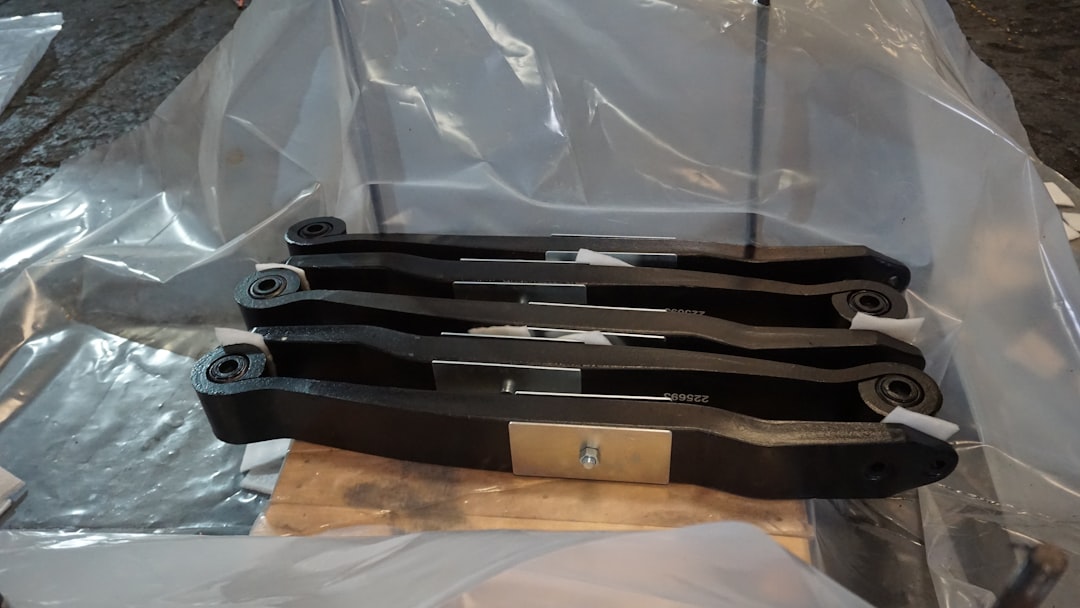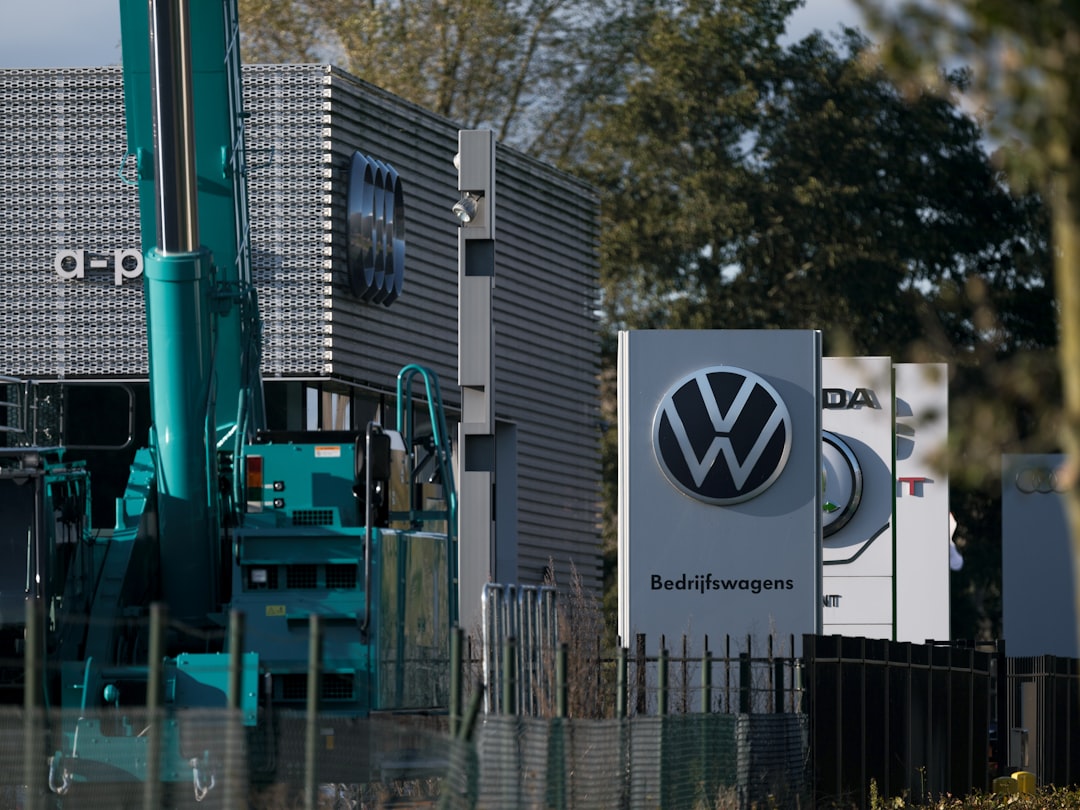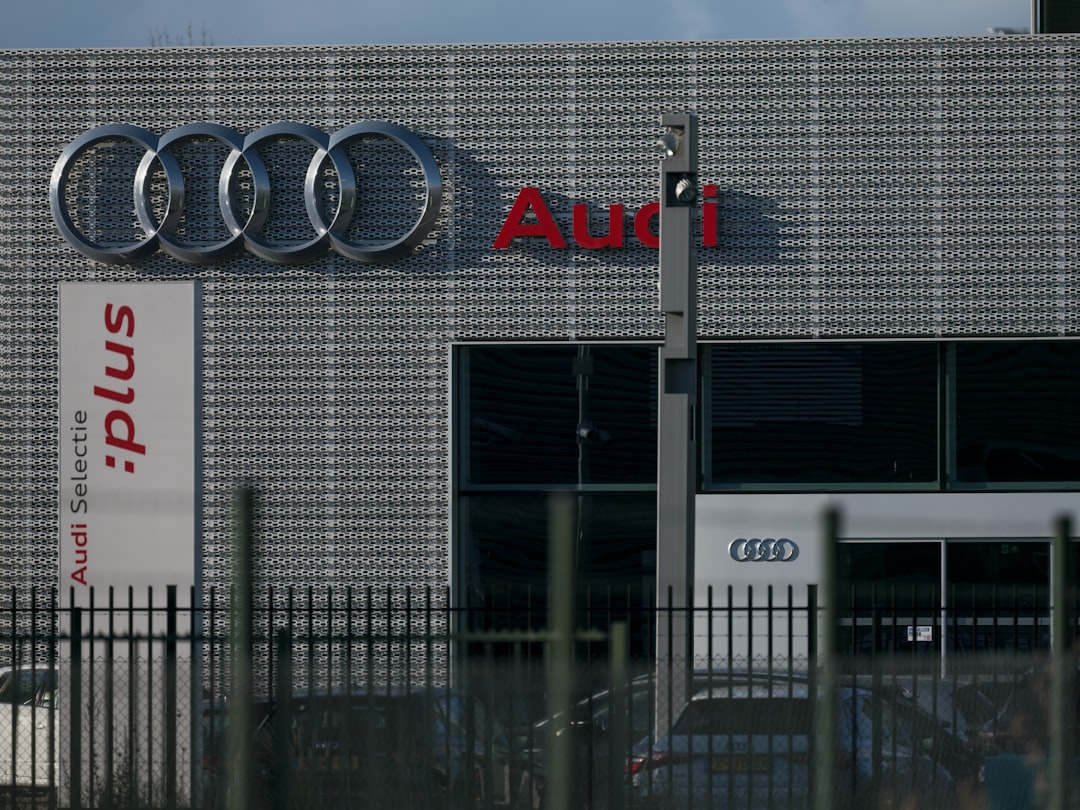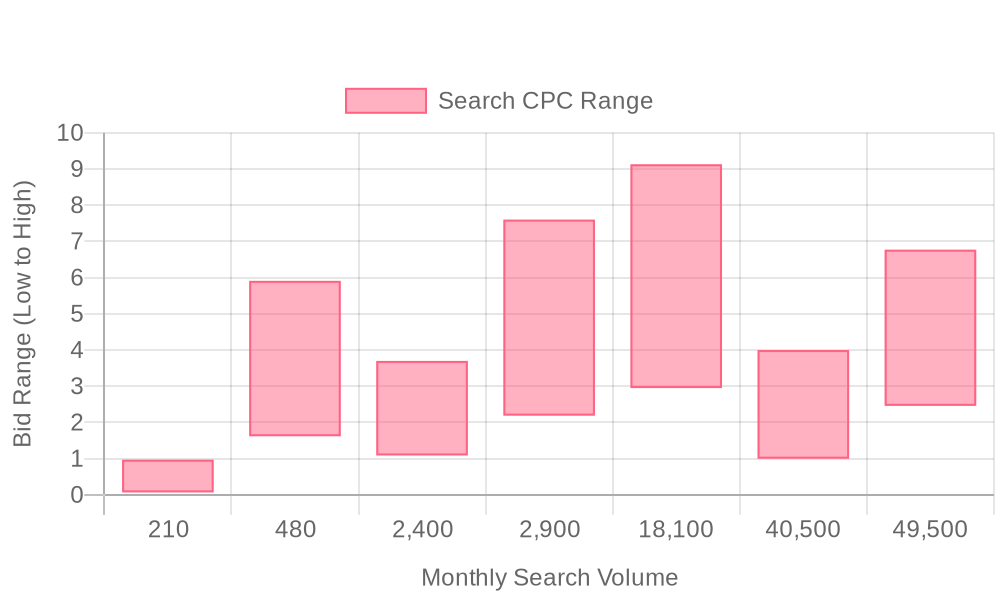
Supercharge your lead generation with a FREE Google Ads audit - no strings attached! See how you can generate more and higher quality leads
Get My Free Google Ads AuditFree consultation

No commitment
Supercharge your lead generation with a FREE Google Ads audit - no strings attached! See how you can generate more and higher quality leads
Get My Free Google Ads AuditFree consultation

No commitment
In today's complex marketing landscape, auto manufacturers face unique challenges in balancing online and offline marketing channels. Platforms like social media foster digital brand awareness, while email marketing nurtures ongoing relationships. However, it is Google Ads that captures high-intent prospects precisely when they are actively searching for vehicle solutions—thus playing a pivotal middle-funnel role in driving engagement. For auto manufacturers, integrating Google Ads becomes essential to intercept decision-makers right when they show a need for automotive solutions. This allows capturing leads effectively, particularly when integrated with other marketing efforts. Whether promoting luxury or economy vehicles, Google Ads can support targeting the right audience with precision, ensuring leads are never missed due to a lack of tracking or visibility.

A high-performing Google Ads strategy for auto manufacturers depends on more than simple ad placement. Today’s buyers expect tailored messaging, immediate relevance, and seamless experiences across every interaction, making accurate tracking and precise audience segmentation essential for sustainable lead growth.
This step-by-step guide delivers actionable methods to ensure automotive brands and equipment suppliers capture high-value prospects, mitigate wasted spend, and close the loop between digital engagement and offline sales. With the right approach, anonymous website visitors become identified companies, intent signals turn into prioritized accounts, and every dollar invested in digital marketing for auto manufacturers delivers measurable returns.
This playbook is designed for digital marketers and B2B revenue teams ready to unify their data, unlock actionable insights, and maximize ROI throughout the automotive lead generation journey. Each step outlined below offers a tactical framework for turning Google Ads into a powerful engine for qualified pipeline growth. To see these strategies in action and streamline your lead generation, get started for free with Sona.

Google Ads delivers measurable impact for auto manufacturers by enabling direct access to buyers with technical and commercial intent at the exact decision-making moment. With the automotive sector’s long sales cycles and specialized buying committees, the ability to identify and engage high-value prospects in real time translates into superior pipeline quality and increased revenue efficiency. For strategies tailored to auto manufacturers, explore PPC and Google Ads strategies and learn how Sona Identification can reveal which companies and buyers are evaluating your automotive solutions.
Targeting in automotive digital marketing goes beyond broad demographics, focusing on procurement teams, engineers, and fleet managers who influence equipment selection or custom vehicle orders. Precision targeting ensures that marketing budgets are allocated to audiences demonstrating active interest, capturing both B2B and B2C opportunities for high-margin services and specialty vehicles. By leveraging real-time audience segmentation, revenue teams can reach the right decision-makers and maximize campaign impact with high-intent segments.
Rapid demand shifts are a hallmark of the industry, especially around new model launches, regulatory changes, or manufacturer-driven promotions. Google Ads enables manufacturers to seize these critical windows, increasing visibility precisely when intent surges. With in-market behavior tracking, marketers can dynamically adjust campaigns to prioritize high-converting segments—ensuring efforts align with real-world buying signals and market movements.
Expanding into new or developing markets requires a nuanced approach to online advertising for cars and automotive equipment. Google Ads’ location and audience filters, paired with intent-based signals, allow manufacturers to match visibility with regions where buyer demand is rising. By syncing CRM and audience data into Google Ads, revenue teams ensure that campaigns reflect the latest account intelligence, eliminating wasted spend on unqualified leads and building stronger regional presence.
Closed-loop measurement is essential for automotive lead generation, where the true value of a campaign is revealed only after a sale or contract is secured. Google Ads supports advanced attribution, capturing the complete journey from ad click to offline purchase or fleet delivery. For step-by-step guidance on tracking and attribution, see measuring marketing’s influence on sales pipeline. Marketers can further optimize with advanced ad conversions tracking and CRM sync to ensure every qualified lead is attributed accurately—enabling smarter investment across all digital channels.
To see how these tactics can transform your go-to-market outcomes, get started for free with Sona and unlock real-time, actionable insights for your automotive marketing strategy.


| Industry | Keyword | Monthly Search Volume | Competition Level | Low Bid | High Bid |
| Auto Manufacturers | toyota ev battery | 210 | LOW | 0.07 | 0.97 |
| Auto Manufacturers | automotive wiring harness manufacturers | 480 | LOW | 1.62 | 5.91 |
| Auto Manufacturers | nissan automobile | 2400 | HIGH | 1.09 | 3.7 |
| Auto Manufacturers | top car brands | 2900 | MEDIUM | 2.19 | 7.6 |
| Auto Manufacturers | japanese car brands | 18100 | LOW | 2.95 | 9.13 |
| Auto Manufacturers | auto parts manufacturers | 40500 | LOW | 1 | 4 |
| Auto Manufacturers | auto manufacturers | 49500 | LOW | 2.46 | 6.77 |
Developing a keyword strategy for Google Ads for Auto Manufacturers requires a nuanced approach that targets both immediate purchase intent and longer-term consideration cycles. High-volume, transactional keywords such as “car dealers near me” capture prospects actively searching for a dealership or ready to engage with a sales team. These terms drive direct response and are essential for ensuring that auto manufacturers and their dealer networks appear at the critical moment buyers move from research to action. For best practices on structuring campaigns around these high-intent keywords, explore this Google Ads guide for car dealerships.
Long-tail keywords, including phrases like “new electric vehicle offers” or “hybrid SUV factory incentives,” enable precise firmographic targeting. These searches often signal deeper research intent or specific product interest, allowing campaigns to deliver tailored messaging that aligns with the prospect’s needs, location, or company profile. By combining these terms with real-time audience segmentation, marketers can ensure creative and landing pages reflect the searcher’s context—whether that’s highlighting fleet discounts for business buyers or lease specials for local consumers.
Negative keywords are equally vital, preventing wasted spend on irrelevant or low-converting queries. Excluding terms like “DIY car repair” or “used car parts” focuses budgets on audiences that are more likely to convert, increasing efficiency and improving ROI across campaigns. Leveraging visitor identification, marketers can further refine keyword targeting by pinpointing companies or individuals entering the funnel, then dynamically updating audience segments as prospects engage with content or move closer to purchase.
A unified workflow between CRM systems and Google Ads ensures that newly qualified leads, enriched with firmographic and behavioral data, are added to audience lists and informed by actual sales activity. This closed-loop approach helps auto manufacturers shift spend to high-performing keywords and audiences, optimizing digital marketing for auto manufacturers with measurable results in both online and offline conversions. To see these strategies in action, get started for free with Sona and unlock deeper insights on your campaigns.
Effective Google Ads for auto manufacturers starts with robust keyword segmentation. Segmenting keyword lists by vehicle type and geography ensures campaigns reach the most relevant buyers, from fleet managers seeking heavy-duty trucks in the Midwest to engineers evaluating EV components in Europe. This method allows automotive marketers to avoid wasted spend on broad searches and prioritize high-value prospects who demonstrate intent aligned with your product catalog. For more on advanced segmentation and targeting, explore Google Ads targeting tips for auto dealers.
Dynamic keyword management is essential for capturing demand as it shifts in real time. When search queries spike for specific models or parts, marketers using Sona Identification can pinpoint not just anonymous traffic, but actual companies evaluating your offerings. This enables rapid budget reallocation toward high-converting accounts and geographic regions, maximizing every click’s potential for lead generation and sales pipeline growth. To deepen your understanding of intent-driven strategies, browse our marketing analytics blog.
Compelling ad copy in automotive campaigns goes beyond listing features. Addressing pain points for each buyer persona—such as operational efficiency for fleet buyers or advanced safety for procurement teams—improves engagement. Messaging tailored to the buyer’s stage in the purchasing cycle drives relevance, whether nurturing early-stage research with technical guides or pushing “request a quote” CTAs for in-market decision makers. See how AI-driven audiences enhance Google Ads performance in the automotive sector.
When marketers align ad copy with Sona Audiences intent signals, they can dynamically update offers and messaging based on how leads interact with your brand across channels. This ensures every ad reflects the latest market needs and product benefits, while CRM and ad platform integrations sync enriched audience segments for sustained performance at scale.
Landing pages must mirror ad messaging and provide a seamless transition for users. For auto manufacturers, this means designing pages specific to vehicle models, applications, or even buyer industries—ensuring technical information and compliance documentation are readily accessible. Personalization based on Sona Identification further increases conversion rates, as visitors see content and offers tailored to their business needs. Learn more about the impact of Google Vehicle Ads on automotive digital marketing strategies.
Advanced platforms enable marketers to identify high-value accounts visiting landing pages and dynamically adjust page content to drive deeper engagement. Integration with CRM and marketing automation systems ensures enriched leads are immediately routed to sales, accelerating follow-up and improving overall conversion velocity.
Continuous optimization is critical for automotive digital marketing success. Monitoring performance metrics such as click-through rates, qualified lead submissions, and offline conversions enables marketers to adjust bidding strategies, refresh creative, and suppress underperforming segments. Real-time analytics reveal which campaigns are driving the most sales-ready leads, allowing teams to focus resources for maximum ROI. Stay informed on Google Ads ROI benchmarks for 2024 to guide your optimization efforts.
Unified data platforms empower marketers to link online ad interactions with offline activities—such as demo requests or dealership visits—providing a holistic view of campaign impact. With enriched lead data synced across Sona Destinations for your CRM, ad platforms, and sales systems, revenue teams can prioritize outreach based on readiness signals and automate follow-up, ensuring every qualified lead receives timely, relevant engagement.

A robust automotive presence begins with an approach that blends data-driven retargeting, precise audience segmentation, and strategic partnerships. Auto manufacturers who invest in these areas consistently see increases in qualified leads and greater brand authority throughout the supply chain. For actionable tactics, consider Google Ads strategies for automotive manufacturers to further enhance your digital initiatives.
By integrating these strategies into their digital marketing for auto manufacturers, teams can identify high-intent companies, nurture them with precise content, and amplify reach through trusted industry channels—all while optimizing spend and measuring true ROI through unified attribution. If you’re ready to maximize your effectiveness, get started for free with Sona and discover how unified analytics can drive measurable impact across every stage of the funnel.

The electric vehicle (EV) revolution is reshaping automotive marketing, demanding that manufacturers align their digital campaigns with evolving buyer expectations. As interest in sustainability and advanced technology accelerates, auto makers must adapt their Google Ads strategies to target specific customer personas that value eco-conscious engineering and next-generation features. Explore actionable PPC and Google Ads strategies for automotive manufacturers to ensure your campaigns are tailored for these new market demands.
Campaigns spotlighting EV benefits—such as zero emissions, battery range, and smart connectivity—outperform generic ads by directly engaging environmentally minded and tech-focused segments. Marketers must craft tailored messaging for each vehicle class, ensuring luxury and economy models are positioned to resonate with unique audience motivations. Advanced tools now interpret real-time intent signals, allowing manufacturers to deliver highly relevant offers to decision-makers actively researching EV models.
Precision targeting is critical when addressing the diverse interests within the EV market. Using dynamic audience segments, marketers can automatically update targeting criteria as leads engage with product configurators, technical specifications, or sustainability content. For additional tips on high-performing EV ad campaigns, visit the Sona blog.
For auto manufacturers, integrating CRM and advertising data is essential for campaign optimization and true ROI measurement. By syncing enriched audience profiles directly into Google Ads and sales platforms, teams ensure that high-intent leads are promptly engaged with personalized offers. Real-time visitor identification enables marketers to move beyond anonymous web traffic, pinpointing companies and individuals most likely to convert, and reallocating budget to the most promising opportunities.
The success of Google Ads for auto manufacturers is rooted in precise strategic execution and continuous optimization. Driving results in this space demands a blend of tailored keyword targeting, granular audience segmentation, high-impact creative, and persistent data-driven refinement to align with the nuanced buying journey unique to automotive manufacturing. For a detailed look at how Google Ads performance benchmarks can inform your planning, explore Google Ads ROI benchmarks for 2024. Additional marketing analytics insights are available in Sona’s blog.
The automotive industry’s distinct challenges—a complex buying committee, long sales cycles, and technical requirements—demand a sophisticated approach to Google Ads strategy. Every element, from segmentation to bidding and creative, must be designed to meet these demands and drive measurable business impact. By investing in advanced planning, leveraging deep data insights, and evaluating integrated tools that predict and activate lead readiness, auto manufacturers can ensure their Google Ads efforts deliver maximum ROI and sustained competitive advantage. If you’re ready to put these strategies into action, get started for free with Sona.
Harnessing the power of Google Ads can significantly propel your automotive marketing strategies, opening new avenues to connect with potential customers and strengthening your market presence. As we've explored, the unique landscape of the automotive industry presents distinct challenges that can be effectively addressed with a well-structured Google Ads campaign. From targeting specific audiences to optimizing ad spend, the right approach can transform your digital marketing efforts.
In today's competitive market, understanding how to effectively utilize Google Ads is crucial for auto manufacturers looking to enhance visibility and drive sales. We discussed the importance of setting clear goals, leveraging data-driven insights, and continuously refining your campaigns to stay ahead of industry trends. By focusing on these key areas, you can ensure that your advertising efforts yield impactful results.
Imagine the possibilities when you master these strategies—engaging with your ideal customers at the right moment, enhancing brand awareness, and ultimately boosting sales performance. By taking actionable steps towards optimizing your Google Ads strategy, you're not just keeping up with the competition; you're setting the pace for what's possible in the automotive marketing landscape.
To experience the difference that a unified platform can bring to your marketing efforts, start for free to explore how our innovative solutions can drive meaningful insights and results for your team today.
The best strategies include integrating Google Ads with other marketing efforts, using data-driven enhancements for precise targeting, tailoring keywords and audience segments, aligning landing pages and creatives with ads, and ensuring cross-channel integration to optimize reach and engagement.
Car manufacturers can use Google Ads effectively by capturing high-intent prospects, employing tailored messaging, and utilizing real-time audience segmentation to adjust campaigns based on market shifts and intent signals.
Effective types of Google Ads for automotive marketing include search campaigns for high-intent queries, display ads for brand visibility, video ads for showcasing vehicle features, remarketing to re-engage past visitors, and using ad extensions for credibility.
While the article does not specify exact budget figures, it emphasizes the importance of aligning budget with high-intent segments, optimizing spend through precise targeting, and reallocating funds toward high-converting accounts to maximize ROI.
Success can be measured through closed-loop measurement and advanced attribution, capturing the entire journey from ad click to offline purchase, and using real-time analytics to track performance metrics, adjust strategies, and optimize ROI.
Join results-focused teams combining Sona Platform automation with advanced Google Ads strategies to scale lead generation

Connect your existing CRM

Free Account Enrichment

No setup fees
No commitment required

Free consultation

Get a custom Google Ads roadmap for your business
Join results-focused teams using Sona Platform automation to activate unified sales and marketing data, maximize ROI on marketing investments, and drive measurable growth

Connect your existing CRM

Free Account Enrichment

No setup fees
No commitment required

Free consultation

Get a custom Google Ads roadmap for your business
Over 500+ auto detailing businesses trust our platform to grow their revenue
Join results-focused teams using Sona Platform automation to activate unified sales and marketing data, maximize ROI on marketing investments, and drive measurable growth

Connect your existing CRM

Free Account Enrichment

No setup fees
No commitment required

Free consultation

Get a custom Google Ads roadmap for your business
Over 500+ auto detailing businesses trust our platform to grow their revenue
Join results-focused teams using Sona Platform automation to activate unified sales and marketing data, maximize ROI on marketing investments, and drive measurable growth

Connect your existing CRM

Free Account Enrichment

No setup fees
No commitment required

Free consultation

Get a custom Google Ads roadmap for your business
Over 500+ auto detailing businesses trust our platform to grow their revenue
Join results-focused teams using Sona Platform automation to activate unified sales and marketing data, maximize ROI on marketing investments, and drive measurable growth

Connect your existing CRM

Free Account Enrichment

No setup fees
No commitment required

Free consultation

Get a custom Google Ads roadmap for your business
Over 500+ auto detailing businesses trust our platform to grow their revenue
Our team of experts can implement your Google Ads campaigns, then show you how Sona helps you manage exceptional campaign performance and sales.
Schedule your FREE 15-minute strategy sessionOur team of experts can help improve your demand generation strategy, and can show you how advanced attribution and data activation can help you realize more opportunities and improve sales performance.
Schedule your FREE 30-minute strategy sessionOur team of experts can help improve your demand generation strategy, and can show you how advanced attribution and data activation can help you realize more opportunities and improve sales performance.
Schedule your FREE 30-minute strategy sessionOur team of experts can help improve your demand generation strategy, and can show you how advanced attribution and data activation can help you realize more opportunities and improve sales performance.
Schedule your FREE 30-minute strategy sessionOur team of experts can help improve your demand generation strategy, and can show you how advanced attribution and data activation can help you realize more opportunities and improve sales performance.
Schedule your FREE 30-minute strategy session





Launch campaigns that generate qualified leads in 30 days or less.
